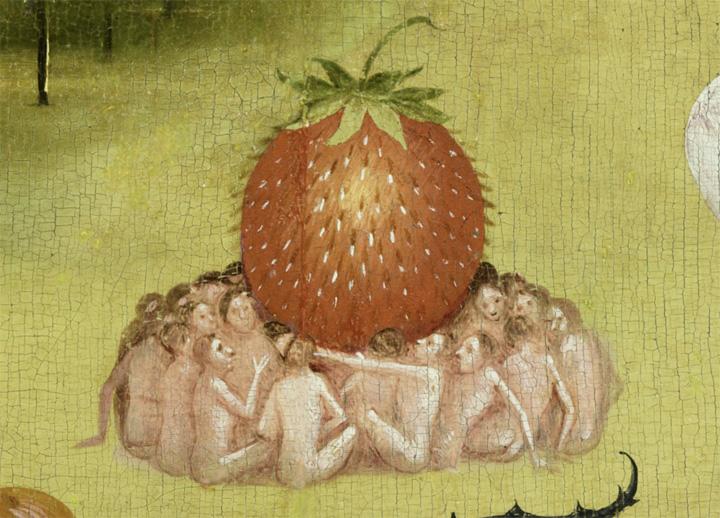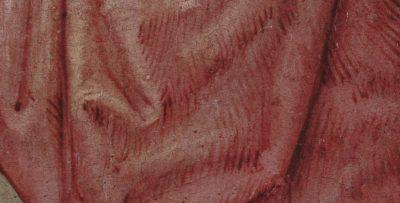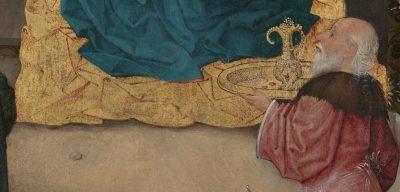I always learn something from the regular Sotheby’s Selects emails. This month the focus is on Hieronymus Bosch’s Garden of Earthly Delights c.1490-1505. Here, I’m adding a little to Sotheby’s excellent summary.
This reminds us that Bosch’ triptych starts closed to display the third day of the Biblical formation of the earth . The left wing opens to show God’s presentation of Eve to Adam in a utopian Garden of Eden, surrounded by a menagerie of animals.
I couldn’t help but notice that God was clothed – was this simply confusing for the naked Adam and Eve, or did it sow the the first seeds of Eve’s temptation?
The central panel is a “bacchanal of cavorting nude humans enjoying a paradise poisoned by lust”. This is of course the garden of earthly delights from which the painting takes it name. As well as the men on unicorns, and fish walking on land, there are plenty of strawberries – one is shown above. These symbolise the “ephemeral pleasures of tasting forbidden fruit” Then the left panel shows hell as an apocalyptic scene of torture and destruction. This nocturnal inferno was a common setting for many of Bosch’s paintings.
Sotheby’s suggest that Bosch “recalls” the modern Surrealists, when of course he predates them by over 400 years.
More recently, Bosch’s Garden of Earthly Delights inspired the spring 2018 Gucci collection.
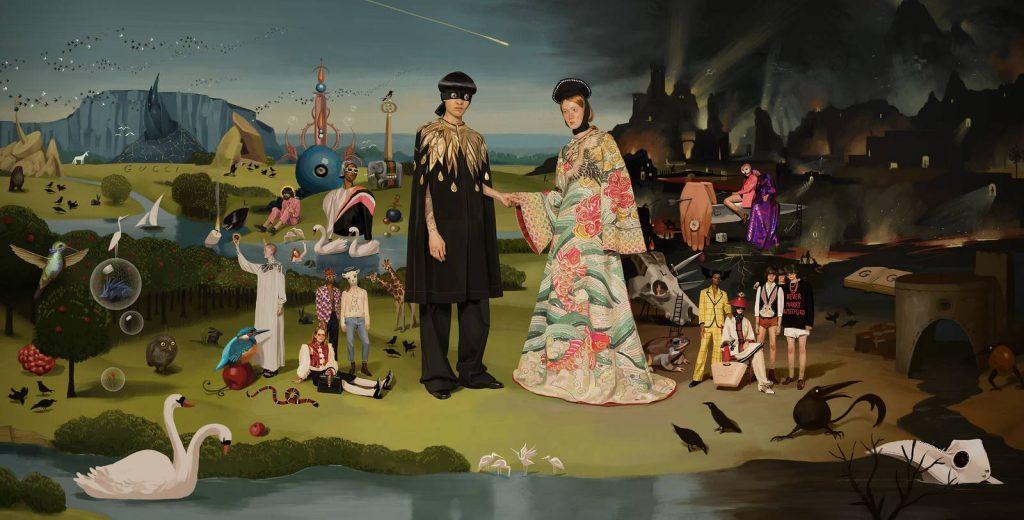
The artist Monreal, when he “brought his vision” to the Gucci collections, said he hoped to “enlighten a younger generation about the cultural significance of … historical works.”
I’m probably old-fashioned, but I also enjoy looking at the original.
And the Bosch project has lots of digitised interactive figures so you can really get into the close detail.
Scroll down from here to see for yourself! I especially liked the porcupine here. Click here to explore more detail and her surround.

Of course the Bosch project includes much more than the Garden of Earthly Delights. There are comparisons of the drawings with the paintings. For example here:
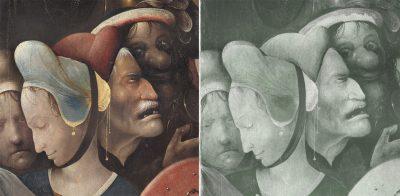
And the digitisation means that its possible to see the fine details of the painting techniques. For example here, in the Adoration of the Magi at the Met. Though I do wonder about any restoration?
I thought I’d end by discussing what all that Desire in the Gardens might have meant.
Jonathon Jones considered this when he reported on the state of the art scholarship about the Gardens of Earthly Desire, included in a book written for the 500th anniversary of the death of Bosch.
The authors are clear that Bosch was NOT, as has previously been suggested, “some kind of heretic, speculating on an alternative lifestyle of free love and fruity fun”.
Instead he was “warning of the punishments awaiting all who indulge themselves”. The painting was produced for the princely House of Nassau. It is “not a secret attack on orthodox religion but a work that pleased the establishment. In the 16th century, it was seized by the Spanish monarchy and taken to Madrid, where it was revered as a gloomy picture of the consequences of sin.”
But. And there’s always a ‘but’, isn’t there! Jones points out that the painting was created between about 1490 and 1505. So at “the heart of the Renaissance, when new ideas were changing Europe”.
Surely Bosch wasnt totally immune to the new knowledge and curiosity sweeping Europe?
Were the “ecstatic nudes” inspired by images of “naked peoples” brought back by early travellers to the Americas.”
Surely the curiosity, the appetite for discovery, is Bosch painting the modern world before it existed.
